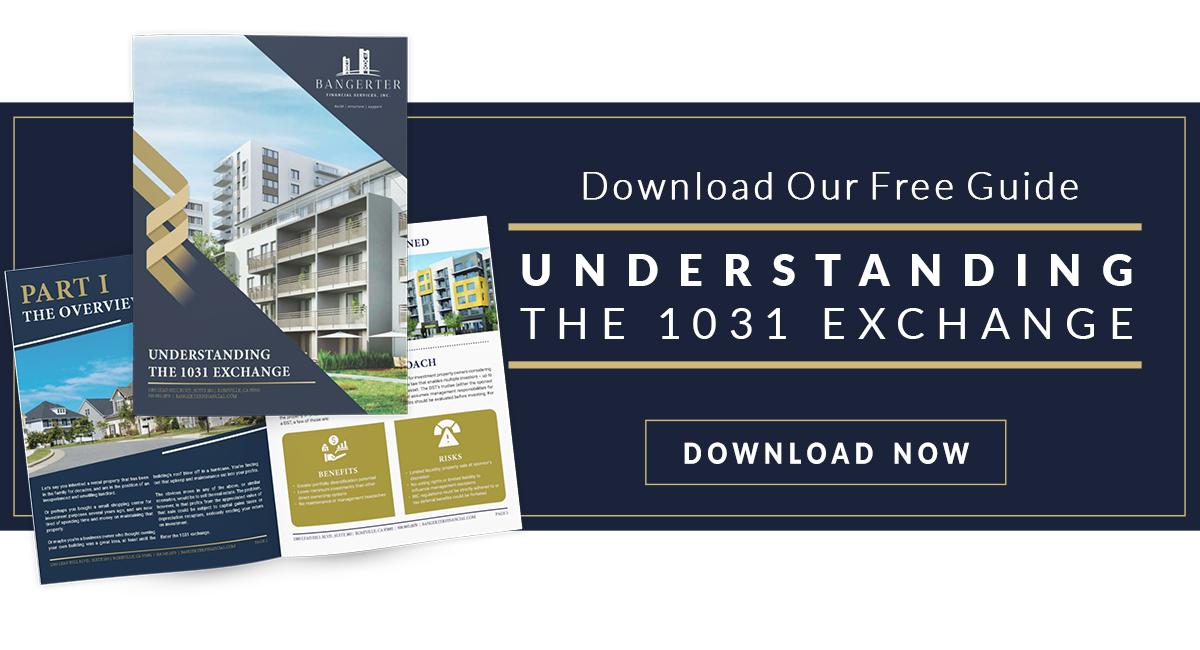If you’re considering making changes to your investment property portfolio, a 1031 exchange could potentially save you thousands of dollars. This transaction, which gets its name from Section 1031 of the IRS tax code, allows investors to defer capital gains taxes on the sale of an investment property by swapping for a “like-kind” replacement property.
While there are many potential benefits of engaging in a 1031 exchange, it’s also a fairly complex process. This makes it critical to understand all the important details before getting started.
Benefits of a 1031 Exchange
A successful 1031 exchange will save you money in capital gains taxes and allow you to avoid triggering depreciation recapture. However, that’s not all. By swapping out properties without having to worry about a major tax burden, you can also:
- Potentially reinvest in a property that generates higher distributions
- Create additional portfolio diversification
- Free up capital to purchase a property of higher value
To achieve these benefits, you must meet certain rules and deadlines. Here are some of the key points you need to know.
Parties Involved
There are four primary parties involved in a 1031 exchange. They are:
- The exchanger – the taxpayer/investor who exchanges a property (you).
- Qualified intermediary – the party who facilitates the exchange by holding the proceeds from the original sale and purchasing the replacement property on your behalf.
- Buyers and sellers – the parties that buy your relinquished property and sell the replacement property. (Sometimes the same party, but not often)
- Other agents –realtors, financial professionals, accountants, lawyers, and other professionals involved in the transaction.
Having a clear understanding of exactly who is involved and their responsibilities will help ensure your transaction goes smoothly.
Required Timelines
Meeting all of the IRS deadlines is critical to the success of your 1031 exchange. The two timelines you need to be aware of are the Identification Period and the Exchange Period. Both begin on the day you close on the sale of your relinquished property.
First, from the date you close on your relinquished property, you’ll have 45 days to identify, in writing, the replacement property you plan to purchase. You also have 180 days to close on the replacement property. It’s important to note that these periods run concurrently and are based on calendar days, not business days. This means that if you take the whole 45 days to identify your replacement property, you’ll only have 135 additional days to close on the property.
Important Replacement Property Rules
In addition to meeting the required deadlines, the IRS provides rules that help you identify replacement properties. The Three Property Rule states that you can identify up to three replacement properties of equal or greater value to your relinquished property. This gives you the flexibility of investing in one, two, or all three of the properties you’ve identified.
In some cases, you can identify more than three properties. The 200% rule states that this is acceptable as long as the fair market value of the identified properties isn’t greater than 200% of the fair market value of your relinquished property. In addition, the 95% rule allows you to identify more than three replacement properties that value more than 200% of your relinquished property, but you must acquire at least 95% of the value of the properties you identify.
Investing in a DST
If you’re tired of the hassles of managing your investment property, you can still benefit from a 1031 exchange. A Delaware Statutory Trust (DST) is considered a “like-kind” property under IRS rules. This popular investment option is a legal entity that allows a pool of investors to purchase fractional shares of a real estate investment.
Since the DST’s trustee makes all of the decisions and is responsible for managing the property, you won’t need to worry about being actively involved.
A DST offers greater portfolio diversification when compared to investing in a single property, and DST properties are generally considered "institutional quality" real estate. Most DSTs have a lower minimum investment than direct ownership options. DSTs are generally 5-7 year investments or longer, so they have limited liquidity. For this reason, only accredited investors are allowed to purchase a DST.
Learn More About 1031 Exchanges Today!
Want to learn even more about how a 1031 exchange works? Download our free guide, “Understanding the 1031 Exchange.” This document takes a deeper dive into the topics covered above and provides even more important information you need to know.
Once you’ve reviewed this information, you might feel ready to move forward with a 1031 exchange of your own. However, if you have additional questions or would like professional advice to help you avoid common mistakes, we’re here to help! Contact us today to schedule a free consultation.





.png?width=273&height=103&name=Brokercheck%20(1).png)

Comments